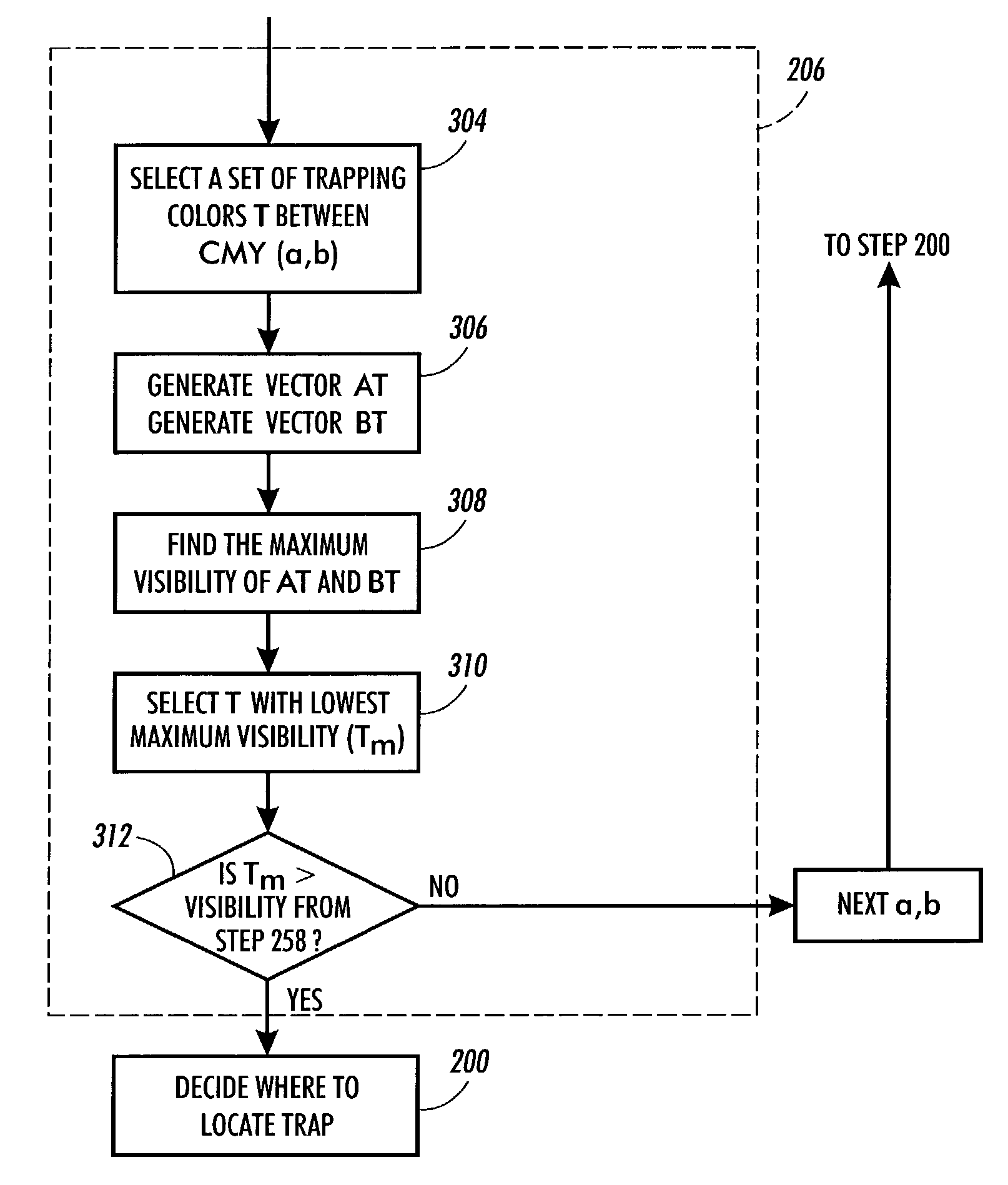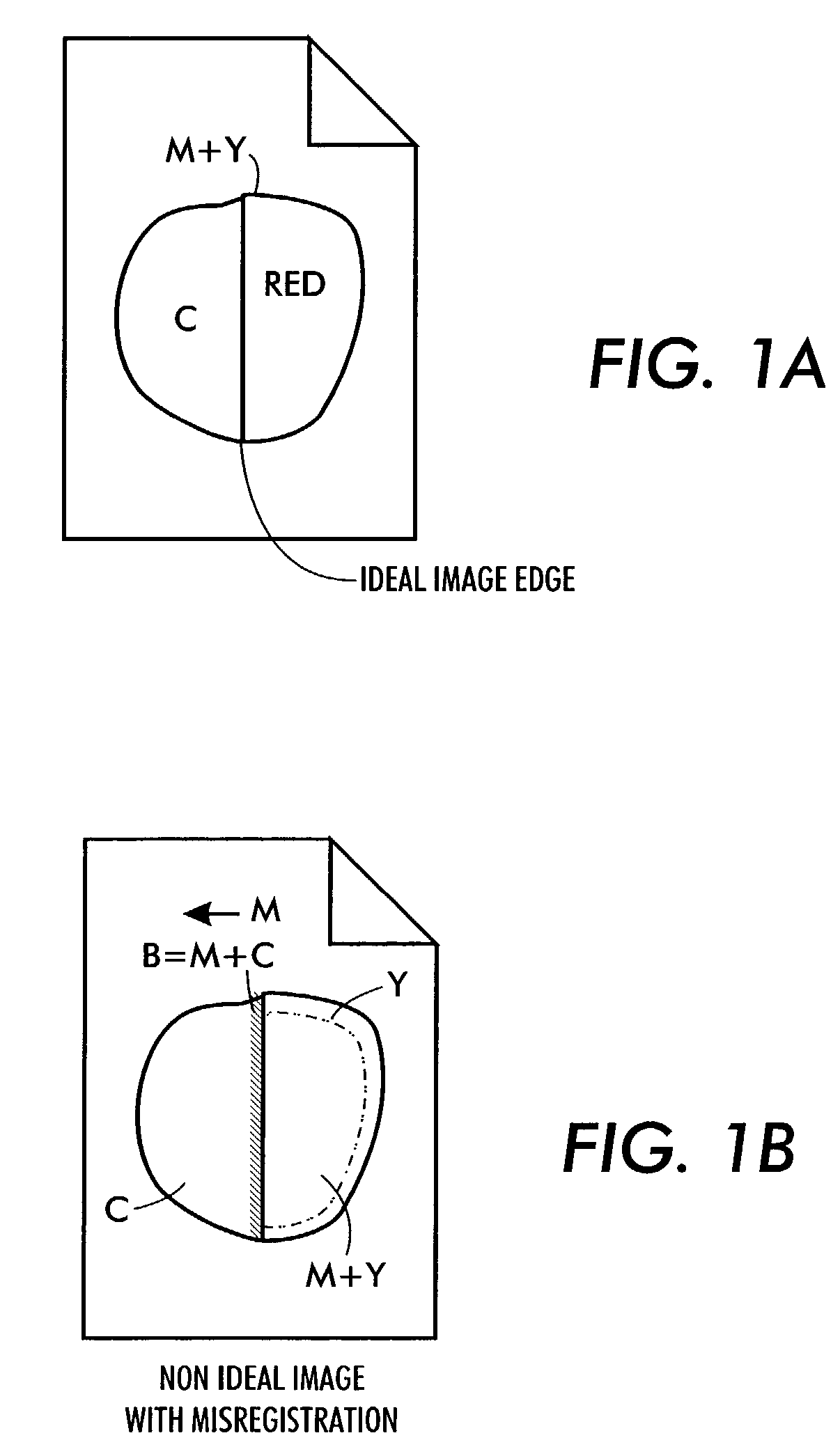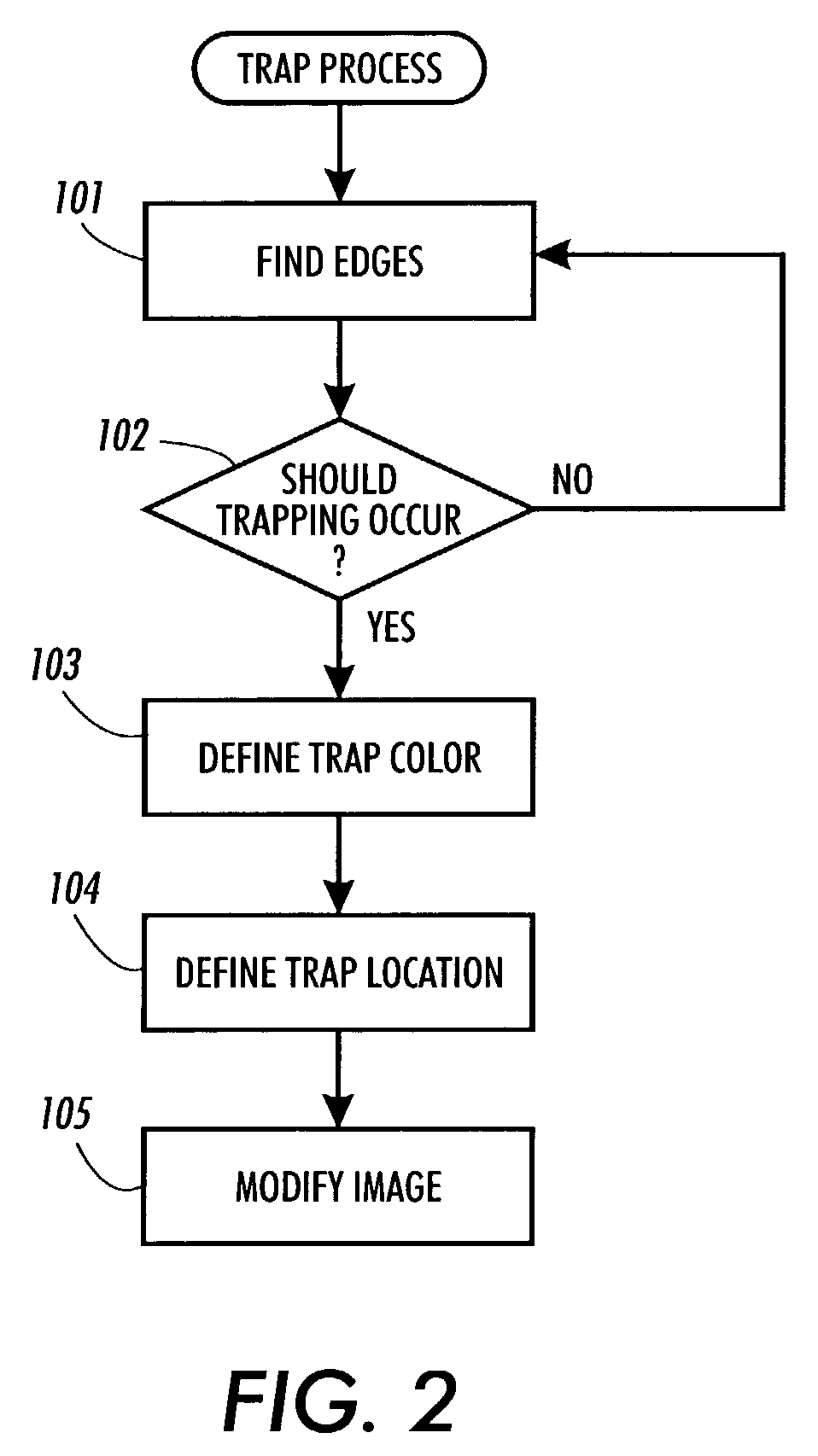System and method of trapping for correcting for separation misregistration in color printing
a color printing and misregistration technology, applied in the field of system and method of trapping for correcting for color printing separation misregistration, can solve the problems of inability to achieve a zero width boundary between regions of different colors, mechanical problem of misregistration, and inability to precisely lay color separations
- Summary
- Abstract
- Description
- Claims
- Application Information
AI Technical Summary
Benefits of technology
Problems solved by technology
Method used
Image
Examples
Embodiment Construction
[0072]Referring now to the drawings where the showings are for the purpose of describing an embodiment of the invention and not for limiting same, a basic image processing system is shown in FIG. 1, where gray image data may be characterized as image signals, each pixel of which is defined at a single level or optical density in a set of ‘c’ optical density levels.
[0073]As used herein, a “pixel” refers to an image signal associated with a particular position in an image, having a density between a minimum and a maximum. Accordingly, intensity and position define pixels. In the particular color system to be discussed, color documents are represented by multiple sets of image signals, each set (or separation) represented by an independent channel, which is usually processed independently. A “color image” as used herein is therefore a document including at least two separations, or sometimes more than 4 separations (sometimes referred to as “hifi color”. Each separation provides a set ...
PUM
 Login to View More
Login to View More Abstract
Description
Claims
Application Information
 Login to View More
Login to View More - R&D
- Intellectual Property
- Life Sciences
- Materials
- Tech Scout
- Unparalleled Data Quality
- Higher Quality Content
- 60% Fewer Hallucinations
Browse by: Latest US Patents, China's latest patents, Technical Efficacy Thesaurus, Application Domain, Technology Topic, Popular Technical Reports.
© 2025 PatSnap. All rights reserved.Legal|Privacy policy|Modern Slavery Act Transparency Statement|Sitemap|About US| Contact US: help@patsnap.com



